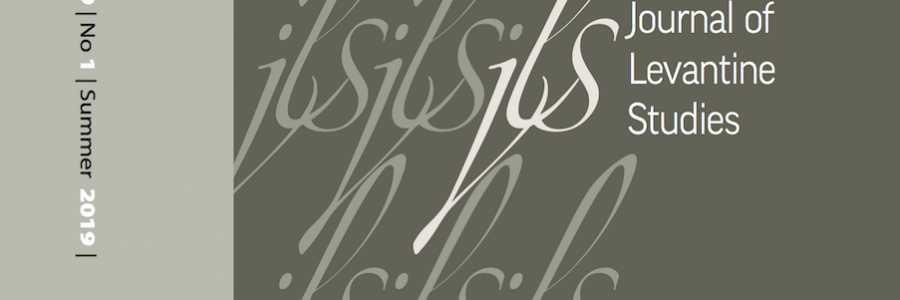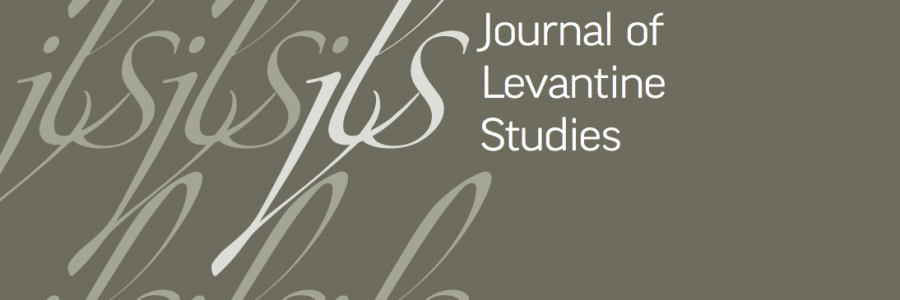-
Add to cartQuick view
Guest Editor’s Note: The Neoclassical Bias in Translation
Free!This is the first of two consecutive issues of JLS devoted to language and translation, specifically to the relationship between Arabic and Hebrew. In the current issue, we address the limits of the neoclassical model of translation, referring to the redefinition of translation in fifteenth-century Europe and infusing it with the spirit of the Renaissance. In a nutshell, the neoclassical model tends to individualize the translator’s identity, to privatize the spatial dimensions of translation, and to eliminate verbal dialogue.Furthermore, it dictates a forward-moving unidirectional formula of translation that usurps the original text and occupies its place; it silences any form of dialogue and replaces conversation and reciprocal dialogue with philology, linguistics, and hermeneutics. Under colonial conditions, the neoclassical model aggravates these limitations, since it reproduces in the translation room the very same asymmetry that typifies the exterior conditions and the power relations between languages. I begin this discussion by examining the emergence of the effects of the neoclassical model on translation in general, and in particular its predicament in relation to translation between Arabic and Hebrew – past, present, and future.
Add to cartQuick view -
Add to cartQuick view
Dialogue with Elias Khoury on Literature and Translation
Free!This is the protocol of a conversation conducted with the famous Lebanese writer Elias Khoury, who addresses languages, literatures, and translation.
Add to cartQuick view -
Add to cartQuick view
The Drowned Library (Reflections on Found, Lost, and Translated Books and Languages)
Free!Anton Shammas’s essay “The Drowned Library” beautifully depicts the symbiosis between Arabic and Hebrew. The drowning library is a linguistic slide freely skating between the two languages.
Add to cartQuick view -
Add to cartQuick view
Dalāla, Dialogue (Maimonides, Bouteldja, and Us)
Free!When Maimonides contemplates translation, he stages a truly fantastic scene that, ostensibly pedagogical, might also be described as dialogical, even theatrical. The scene deepens and thickens entanglements, encounters, and interpellations, the terms of which signal toward discrete yet vanishing points—one might say, signs—upon lines of unlikely geometries and implausible grammars. Between Hebrew and Arabic, “philosophy and law” (as Leo Strauss underscored), across writing and aurality, Maimonides puts meaning at play, and he does so by playing language games, doing things with signs. Of course, his book itself is, to begin with, a sign of sorts, a tangled point or pointer on fabled lines, bearing a title so notorious that it can no longer be read, much less be heard or thought. What does it mean to hear? What is within and between Hebrew and Arabic? What is at play within and between the Jew and the Arab?
Add to cartQuick view -
Add to cartQuick view
Partitions and Translations: Arab Jewish Translational Models in Fin de Siècle Palestine
Free!This article offers a new reading into translation works from early twentieth-century Palestine which operated in between the Arabic-Hebrew cultural and linguistic borderlands. Against the backdrop of the political and social events in that period which dominated by processes of national, ethnic, and religious partitions, the article explores the ways in which these Arab-Jewish translators fundamentally challenges the nationalistic and monolingual separatist ideology and represent an alternative political and cultural route. The article explores their unique translation methods that were based on four principles: Polyglot fusion—mixing Arabic and Hebrew, Jewish and Muslim traditions; loose distinction between oral and written traditions; dialogical approach that emphasizes the intertextuality of literary traditions and the intersections of languages and cultures; and the unfixed intersection between original source and translation. The fluidity that is inherent in these translation methods becomes a source of resistance to the dominant political force and dismantles any (national) claim over exclusive ownership of texts, traditions, or languages. In a time of struggle over the ownership of the (biblical) land and the (biblical) text, these translations focused on tales and traditions free from ownership and without any stable original source.
Add to cartQuick view -
Add to cartQuick view
More than a Mere “Welcome” – The Linguistic Landscape of Welcome Signs in Palestinian Localities in Israel
Free!The article offers a critical reading of the linguistic landscape of welcome signs in localities of the Palestinian minority in Israel. It examines the formal visual aspects of the languages Arabic, Hebrew, and English, their placement on the signs, and the signs’ content—including the normative messages, translation, transliteration, and place-names. These analyses shed light on the links between the linguistic landscape and the sociopolitical and socioeconomic status of the Palestinian minority, as well as on the perceptions of Palestinian citizens regarding their relationship with the Jewish majority. The study reveals that despite the official status of welcome signs, their linguistic landscape presents an array of attitudes toward coping with the Israeli reality and its injustices. The study shows how the local Arab political leadership in Israel mobilizes linguistic authority as a platform for negotiation with the Jewish majority and represents a sociolinguistic strategy of highlighting a complex history while minimizing the potential for friction inherent in that space. The contents of the welcome signs to Arab localities reflect and reproduce the power structures in the State of Israel. The article demonstrates that the dichotomous division of top-down and bottom-up signs is not unequivocal and that there is room that for semiofficial space and an intermediate category between the hegemony and the subaltern.
Add to cartQuick view -
Add to cartQuick view
Names under Supervision: Israeli Linguistic Regulation of Arab Streets – Turʿan as a Case Study
Free!The present article contributes to the local study of street signs, and more generally, of majority and minority language representation. It analyzes the street signs set up by the Turʿan municipality in the North of Israel during the term of the town’s Jewish mayor Yaakov Zohar (2008-2013), shedding light on the impact of top-down political processes on the design of Arab space, its interpretation by a municipality headed by an agent of the establishment, and the namings’ implications for the Arab minority’s spatial socialization. Through the names selected and the visual and orthographic characteristics of the linguistic landscape, the article highlights the politics of shaping cultural and historical identity in physical space. The visual characteristics examined are related to the visibility of the two languages—Arabic and Hebrew—or more specifically, to the representation of one as opposed to the deliberate marginalization of the other. My reading of street signs is informed by critical toponymy and semiotics, which emphasize the ideological meanings inherent in the depth structures of names and visual communication products. I consider the initiative by a Jewish mayor to name the streets of Arab Turʿan an attempt to influence the spatial awareness of its Arab inhabitants in keeping with the values of the establishment.
Add to cartQuick view -
Add to cartQuick view
Vol. 9, No. 1 (Summer 2019)
Free!Add to cartQuick view -
Add to cartQuick view
Vol. 9, No. 2 Winter 2019
$45.00Add to cartQuick view
- Home
- About JLS
- Issues
- Vol. 9 No. 1 | Summer 2019
- Vol 8 No 2 Winter 2018
- Vol. 8, No. 1: Summer 2018
- Vol. 7, No. 2: Winter 2017
- Vol. 7, 1: Summer 2017
- Vol. 6, Summer/Winter 2016
- Vol. 5, No. 2 Winter 2015
- Vol. 5, No. 1 Summer 2015
- Vol. 4, No. 2 Winter 2014
- Vol. 4, No. 1 Summer 2014
- Vol. 3, No. 2 Winter 2013
- Vol. 3, No. 1 Summer 2013
- Vol. 2, No. 2 Winter 2012
- Vol. 2, No. 1 Summer 2012
- Vol. 1, No. 2 Winter 2011
- Vol. 1, No. 1 Summer 2011
- Blog
- dock-uments
- Subscribe
- Submit
- Contact





